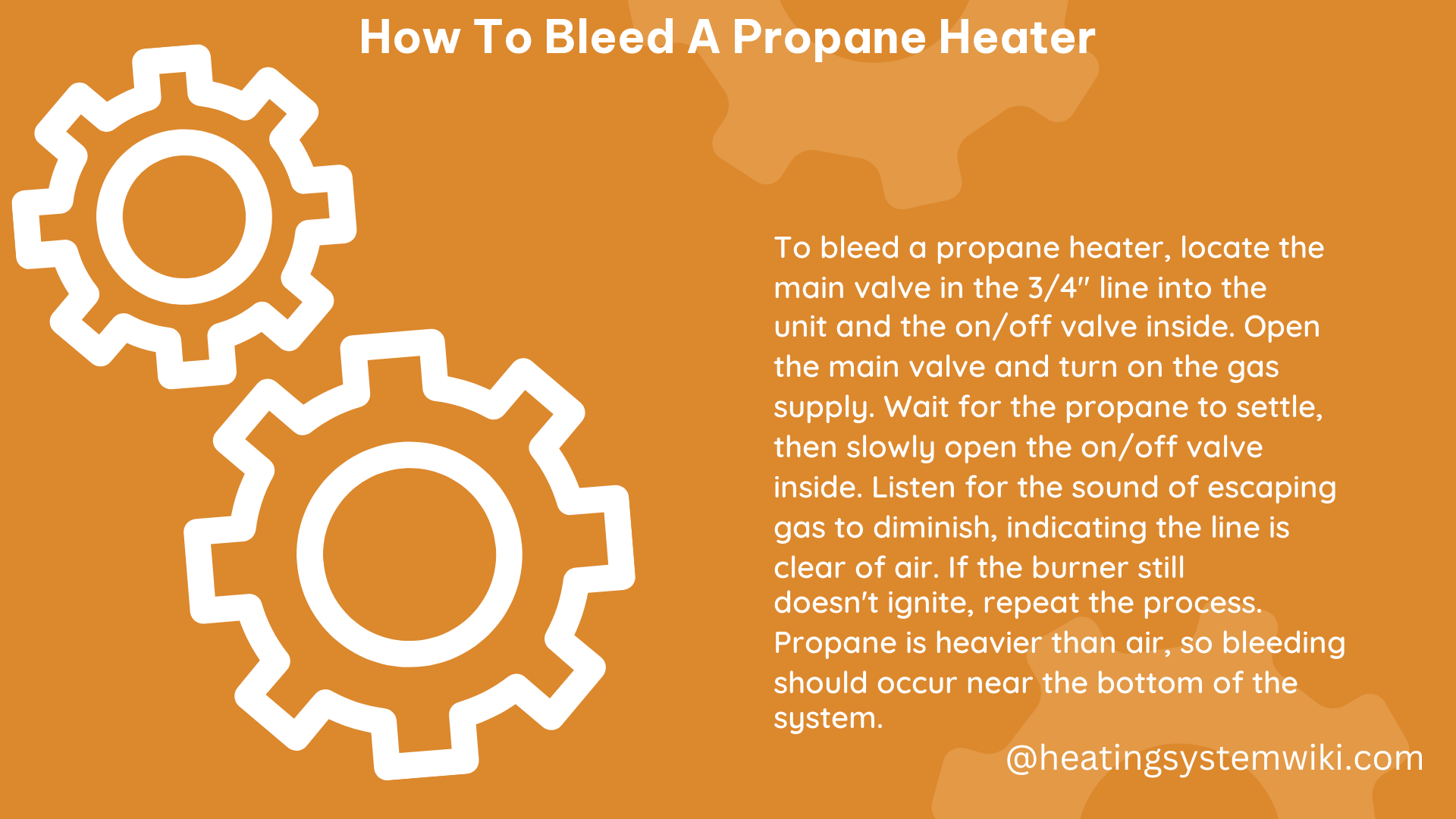Bleeding a propane heater is a crucial maintenance task that ensures the efficient and safe operation of your heating system. When the propane tank runs empty, air can accumulate in the gas line, preventing the heater from igniting properly. This comprehensive guide will walk you through the step-by-step process of bleeding a propane heater, along with advanced technical details and hands-on tips to help you tackle this task with confidence.
Understanding the Importance of Bleeding a Propane Heater
Propane is a liquefied petroleum gas that is heavier than air. When the propane tank runs empty, air can enter the gas line, creating a blockage that prevents the heater from igniting. Bleeding the line removes this trapped air, allowing the propane to flow freely and ensuring the heater operates safely and efficiently.
Step-by-Step Guide to Bleeding a Propane Heater

-
Turn Off the Power Supply: Before you begin, ensure that the thermostat, the main power to the unit, and the on/off valve inside are all turned off. This will prevent any potential safety hazards during the bleeding process.
-
Wait for 5 Minutes: Allow the gas pressure to equalize by waiting for 5 minutes after turning off the power supply.
-
Locate the Bleed Valve: The bleed valve is typically located near the gas control valve or regulator. It may be a small screw or knob that can be turned with a wrench.
-
Prepare a Container: Place a container beneath the bleed valve to catch any propane that may escape during the bleeding process.
-
Open the Bleed Valve: Using a wrench, turn the bleed valve counterclockwise until propane starts to flow out. You should hear a hissing sound as the air escapes.
-
Close the Bleed Valve: Once a steady stream of propane flows out without any air bubbles, turn the valve clockwise to close it.
-
Check for Leaks: After bleeding the line, use a soapy water solution to check for any leaks around the valve and connections. If you see bubbles, tighten the connections or replace any damaged components.
-
Restart the Heater: Follow the manufacturer’s instructions for restarting the heater, which typically involve turning on the gas supply, power, and thermostat in a specific order.
Technical Specifications for Bleeding a Propane Heater
- Gas Type: Propane, with a specific gravity of 1.52 compared to air
- Gas Pressure: Typically between 11 and 14 inches of water column (iwc) for residential applications
- Bleed Valve Size: Usually 1/8″ or 1/4″ NPT (National Pipe Thread)
- Bleed Valve Torque: Typically 10-15 ft-lbs
DIY Tips for Bleeding a Propane Heater
-
Use a Wrench: A wrench can provide the necessary torque to open and close the bleed valve properly, ensuring a secure and leak-free connection.
-
Check for Leaks: Always check for leaks after bleeding the line to ensure the safety of your heating system and your home.
-
Follow Manufacturer Instructions: Consult the manufacturer’s instructions for your specific heater model, as the bleeding process may vary slightly depending on the make and model.
Conclusion
Bleeding a propane heater is a straightforward task that can help ensure the safe and efficient operation of your heating system. By following the step-by-step guide and adhering to the technical specifications and DIY tips provided in this comprehensive manual, you can confidently tackle this maintenance task and keep your propane heater running smoothly.
